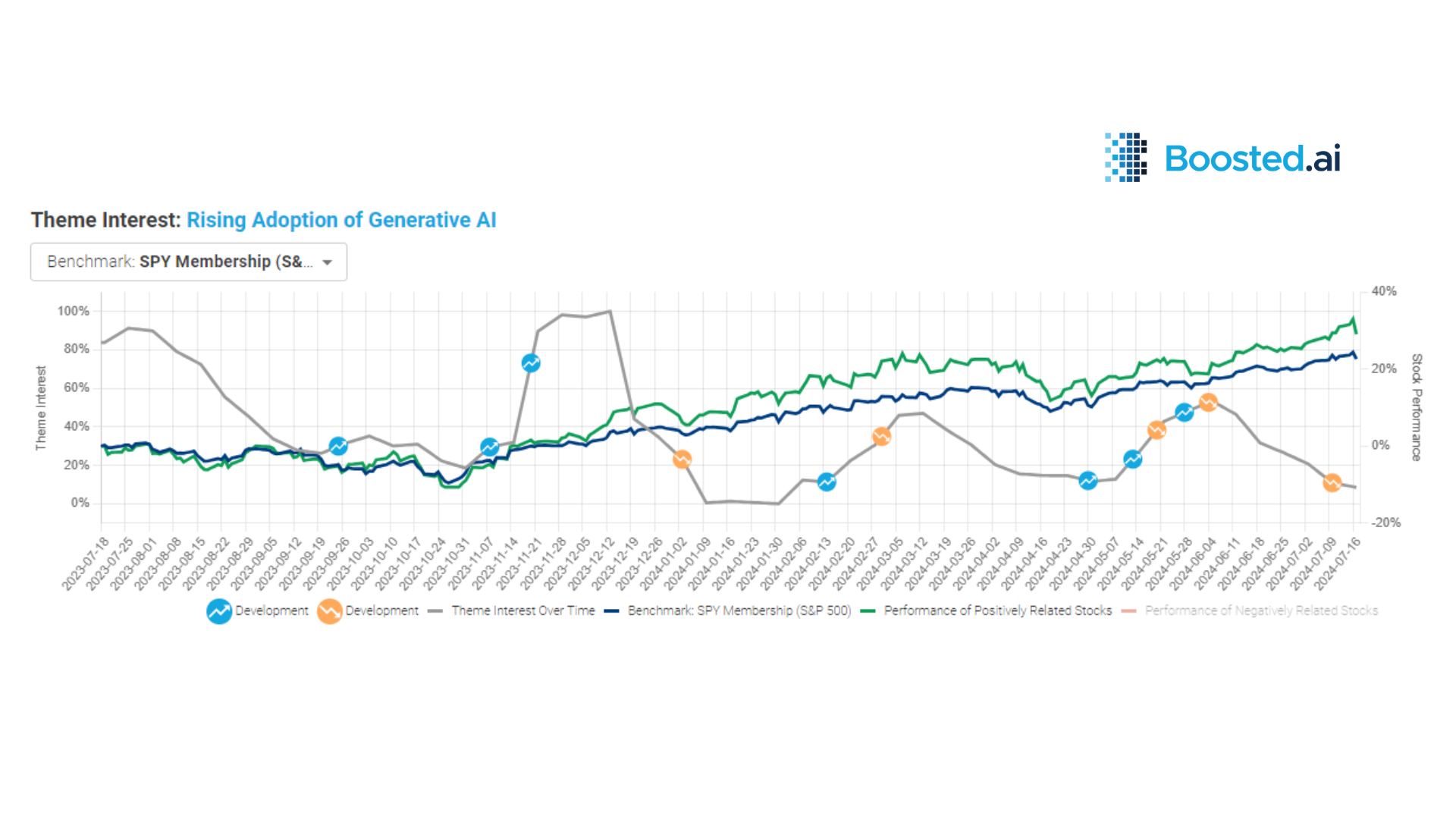Thematic investing is a forward-looking investment approach that aims to identify specific ideas, trends, and companies that stand to benefit from a certain theme, like ESG, electric vehicles, e-gaming, and so on. Unlike traditional sector funds, thematic funds tend to span multiple Global Industry Classification Standard (GICS) sectors. This investment strategy is growing rapidly, with Morningstar reporting 589 thematic funds debuting globally in 2021, more than double the number in 2020. Europe leads the market, holding 55% of global assets.
Why thematic investing?
Thematic investing is driven by the belief in the growth potential of a theme across multiple industries and sectors. It allows investors to deploy capital in a targeted way, providing more focused exposure than traditional sector funds. Popular themes include Electric Vehicles, Future of Food, Generative AI, and Green Energy. Additionally, the active management and control associated with thematic investing (vs a more “hands-off” approach within traditional ETFs) appeal to many consumers.
Researching thematics: it’s a lot of work
Traditionally, researching thematic investments involves a lot of manual steps, and ongoing upkeep::
- Determine a Theme: Identify a relevant and promising theme.
- Research Industries: Investigate all industries involved in the chosen theme.
- Economic Impacts: Analyze the economic impacts of the theme.
- Stock Selection: Research stocks that fit the theme within each subsector.
Using data providers like MSCI can facilitate this process, but it can be costly and may not always cover the desired themes. This method requires scanning company filings, trade publications, economic papers, and research reports, and continually monitoring for changes or new players in the theme.
The problems with manual research for thematics
- Adaptability: Themes can shift and adapt frequently, and the frequency of updates from data providers is often unclear.
- Time Consuming: Researching across multiple industries and geographies is labor-intensive and difficult to scale.
- Specificity: Data providers may not align with specific investment criteria or themes.
- Line of Sight: Gaining clarity on why companies enter or exit a theme can be challenging.
- Ongoing: Given the adaptability problem, this is all work that must be done on an ongoing basis for every thematic fund a company puts out.
Electric vehicles example
Electric vehicles (EVs) represent a growing market, making them an attractive theme for investment. However, several concerns must be addressed:
- Supply Chain: Lithium supply, battery recycling, and charging capacity.
- Sector Inclusion: Deciding which categories (e.g., robotics, automation) fit the theme. What a user thinks fits might not always match with what the data providers have determined fits, leading to difficulty determining portfolio weightings and balance.
- Consensus: Aligning with data providers on critical factors like coal power for Chinese EV growth.There may be competing overlap with other factors like ESG or other environmental impact scores.
- Portfolio Construction: Ensuring companies meet other investment criteria, such as market cap minimums, and considering active management strategies.
A better way: AI-powered thematic investing
AI-powered thematic investing offers a data-driven approach to discover and create investment themes. By leveraging AI, investors can unlock new ways to invest in trending themes, making the research and investment process simpler and more efficient. AI analyzes and sorts data, while the investor’s expertise guides the AI, resulting in customized and targeted thematic investments. The benefits of using artificial intelligence – versus manual methods – are that AI can look at many more data points to determine, on multiple levels, the applicability of any stock to any theme, and that because it is compute powered, it is continuously monitoring and updating for any changes. Using AI to create thematics puts the user in control of the parameters in a data-driven way, giving them more flexibility.
Summary
Thematic investing is a rapidly growing market, especially among younger investors. It provides exposure to growth-oriented names across multiple sectors. Manual research for thematic investments is tedious and time-consuming, even with data providers. AI simplifies thematic research and investing, learning and adapting alongside the investor. By utilizing AI in thematic investing, investors can enhance their decision-making process, making it easier to identify and capitalize on emerging trends. This approach not only saves time but also creates efficiency, allowing for more targeted and informed investment strategies.
Interested to hear more? Reach out to us here
